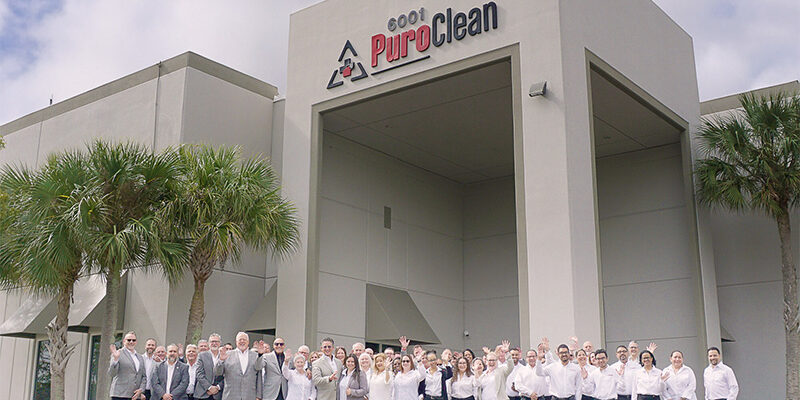Do Your Clients Need Three Estimates for Insurance Claims?

By Jon Isaacson
Have you ever heard, “You should always get three bids,” in reference to determining the cost of a home improvement project? While it may sound like good advice, it often overlooks a more important factor and may not be in the best interest of your clients in many situations. In this article, let’s discuss some of the reasoning behind this thought process as well as whether it is true when dealing with a property damage insurance claim.
Most of your clients are sure to think about the price when exploring home improvement options. Price is an important factor, but it’s not the only one (see our prior article on determining the cost of remodeling). When dealing with an insurance claim restoration, renovation, or repair, price is one of the least important variables. Adjusters or insurance agents (brokers) may advise your clients to get three estimates for your insurance claim, but before they do so, you should ensure that they ask these questions:
Are Three Estimates Necessary For An Insurance Claim?
For the majority of property damage claims, the two initial questions are:
- Did this damage result from a covered, or non-excluded, source?
- What are the extent of the damages?
Once those two questions are answered, the question that follows is, “What is the game plan to restore the property to resemble pre-loss conditions with materials of like kind and quality (we call this The Claims Standard)?”
If your client has a broken pipe and water spewing into their home, they will likely call a plumber to shut the water off. The question to ask them is whether or not they need three plumbers to tell them what it costs before they decide who to hire? More than likely, a homeowner in this situation will hire whoever can get there first. Expedience precedes cost and is the best value for this phase of the work to be completed.
As a restoration professional, your ability to be expedient and upfront with your clients are crucial to standing out in the crowd and creating long-term relationships in your region.
The value in this situation is rapid response leading to reducing further damage by addressing the immediate threat, e.g. the broken pipe, and shutting the water off. If that call is at 2 am or interrupts the plumber’s current workload (even during business hours), it is going to come at a premium.
Homeowner’s insurance policies typically owe to cover legitimate and reasonable costs for services rendered. This may not include repairing what is considered the source of the loss but usually extends to damages resulting from the covered (or non-excluded) source. Whether insurance is paying for your client’s damage or they are, shutting off the water is in the best interests of all parties.
Again, the scope and the value precede the price. A reasonable cost for this emergency service is subject to some interpretation but would primarily mean that it is consistent with your normal costs as a restoration team in similar situations. It would not mean that another plumber told a caller over the phone that their price is 20% less or some national pricing average showed a cost of 30% less.
In an emergency situation, getting three bids creates less value for all parties and makes the issue worse by allowing more water, by the minute, to impact the structure.
Are Three Bids Recommended for Insurance Claims?
The question insurance has to answer, by reviewing policy language with your client, is whether the source was specifically excluded by their policy or whether there are specific exclusions for their scenario. As a general rule of thumb, damages that are “sudden and accidental” should be covered. Your team can assist your client in documenting the source and extent of damages. Having an independent source provide thorough and accurate information to your client as the homeowner and present that information to their insurance company is a value to all parties.
If an insurance representative advises that your client should acquire three bids, it would be appropriate to ask them why. If your team is qualified, has been thorough, and presents a plan that makes sense to your client, it only serves to delay the process by getting two additional, potentially competing bids. It also opens a door for your competition that is unnecessary to even open since underbidding is more common nowadays than ever before.
In a restoration situation, getting three bids creates less value for the homeowner by delaying the response and returning the property to pre-loss conditions.
Are Three Estimates Helpful For Insurance Claims?
Why would an insurance company want three estimates? Is it to create an average cost or to provide them the option to settle for the lowest price? Whether insurance is involved in a renovation project or not, price is not the only factor and often should be the least important one. The lowest, middle, or even the most expensive price has no bearing on the best value. As a restoration professional, you should be proving to your clients that you are most qualified to meet their needs without second or third estimates.
If the damages are extensive, you will be working with this client for several months, so it is important to ensure that you are providing comfort and confidence in your work for your client. Show them why other estimates are not necessary from the start. The right price is what a willing buyer agrees to pay a willing seller. The focus should be on developing a clearly agreed-upon scope of work and, from that, establishing a legitimate and reasonable cost for goods and services. Everyone knows the cheapest isn’t always the best, but the most expensive or the middle of the three has no bearing on value either. Price and value are not synonymous when selecting the right service provider, and this is what you should be showing your clients from the start.
In a repairs situation, getting three bids creates less value for the homeowner by delaying the process of returning the property to pre-loss conditions.
As a restoration professional, the goal should be to share your experience and skill with your clients to ensure they stick with you for their restoration needs and don’t turn to others for additional estimates. With the right relationship-building skills, you can convince your clients that three estimates are hardly needed even when insurance companies try and tell them otherwise.
Jon Isaacson, known as the “Intentional Restorer,” is a contractor, an author, and the host of the DYOJO Podcast. Jon speaks, writes, and coaches start-up phase owners and growth-minded restoration professionals through his organization, The DYOJO. Isaacson is the author of the Be Intentional book series for restorers. Reach him at [email protected].












